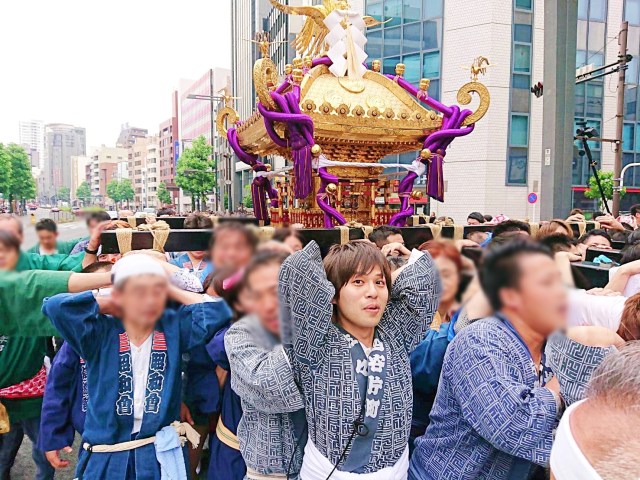
We join the festivities at Suga Shrine, made famous as one of the real-life locations from the hit anime film Your Name.
Japanese festivals occur throughout the year around the country, bringing people and communities together to pray for bountiful harvests, celebrate special holidays, and honour local deities.
At the centre of many festivals is the mikoshi, a portable shrine that gets paraded around the area on carts or on the shoulders of residents. And while many locals take part in the festivities, not everyone gets to experience what it’s like to hoist a heavy mikoshi up on their shoulders. Our writer Ahiruneko was one of those people, who, despite being 33 years of age, had never once carried a portable shrine around town.
Luckily for Ahiruneko, though, his chance to step in as a mikoshi carrier came to him this year, when one of his friends, who regularly takes part in festivals, invited him to join in. The first rule of being a mikoshi carrier is that you can’t do it in civilian clothes, though, so Ahiruneko headed out to a nearby store to get fitted out in the appropriate attire.
Different groups in various regions wear different styles of festival gear, so his friend gave him a list of what would be required: white tabi split-toed boots, a white shirt and pants, waistband, and a patterned bag.
When the day of the festival arrived, Ahiruneko was dressed and ready for his responsibilities, complete with the group’s happi festival coat, which his friend had ordered for him.
The festival Ahiruneko was taking part in was the Suga Jinja Reitaisai, which translates as Suga Shrine Regular Grand Festival. Fans of the smash hit anime film Your Name will know Suga Shrine as one of the film’s most famous real-life locations, where the two main characters cross paths on a staircase near the shrine.
The annual festival takes place in Tokyo’s Yotsuya Ward, where the shrine is located, and on the day of the event there were crowds of participants and onlookers surrounding the mikoshi.
A number of local neighbourhoods had come together to help transport the deity on its golden palanquin throughout the town. Positions at the front of the palanquin appeared to be the most coveted, with people advised to switch positions with others in rotation to ensure that nobody would get too fatigued.
▼ Ahiruneko patiently waited to receive instructions on when to approach the golden palanquin.
As the festivities got under way, the palanquin rose from its standing position, picked up by a mass of people underneath it, and the sound of chanting broke out as the group stepped forward in time together, jangling the golden bells on the portable shrine.
The people underneath the holy shrine seemed to know exactly what they were doing, confidently calling out while expertly carrying the large planks on their shoulders. As a first-timer, Ahiruneko began to feel a little intimidated by this show of strength and wondered if he shouldn’t have agreed to take part, but at that moment his friend grabbed him and pulled him towards the moving mikoshi, setting him underneath one of the large wooden planks.
And then, suddenly, Ahiruneko found himself doing the thing he’d never done before. He was now helping to carry the mikoshi!
The wooden plank on his shoulder was heavy, and the jostling with so many others in such a small space reminded him of a mosh pit. And like a mosh pit, it was strangely thrilling.
It wasn’t long before the first person in line gave up their position, and then it was time for Ahiruneko to take the lead. This meant he had to switch from holding the plank on his shoulder to holding it on the back of his neck with both hands.
▼ From noob to expert in minutes.
The calls and chants differed according to the area, and when he was at the front, Ahiruneko found himself calling out “Oisaa! Hoisaa!!” with all the others in the group. These calls created a great sense of camaraderie between everyone, and by the time the event was over, and everyone gathered to say their farewells, Ahiruneko felt like he had just become a part of something much bigger than himself.
Our writer was incredibly grateful for the experience, and although it cost him roughly 10,000 yen (US$92.23) all up to buy the outfit to take part in the event, it was worth every yen.
Now that he’s got his festival outfit, Ahiruneko plans to take part in the festivities again next year. And then maybe the year after that, if they’ll have him. He’ll want to make sure he doesn’t overdo it on the plank-carrying, though, or else he runs the risk of developing huge “mikoshi dako” lumps on his neck and shoulders!
Photos © SoraNews24
● Want to hear about SoraNews24’s latest articles as soon as they’re published? Follow us on Facebook and Twitter!
[ Read in Japanese ]

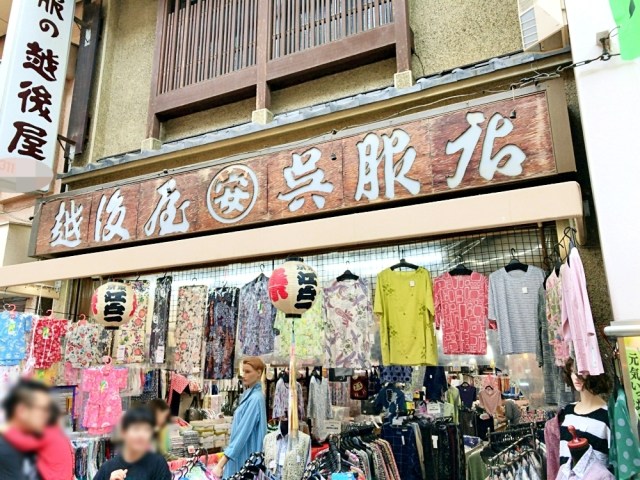
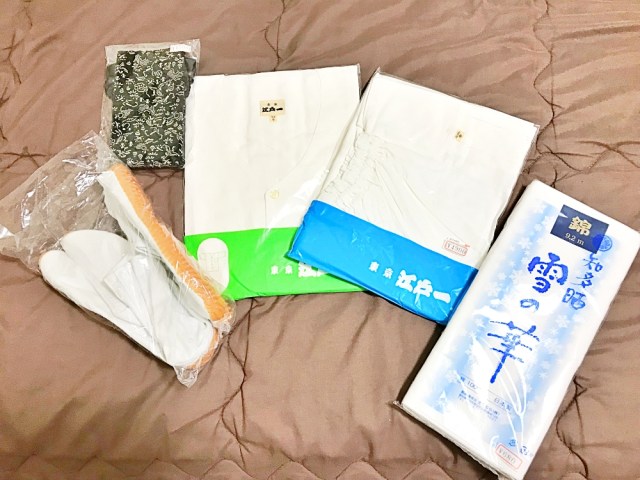

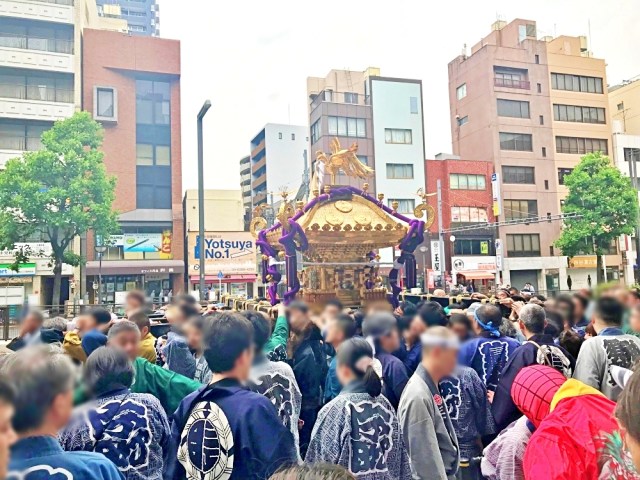
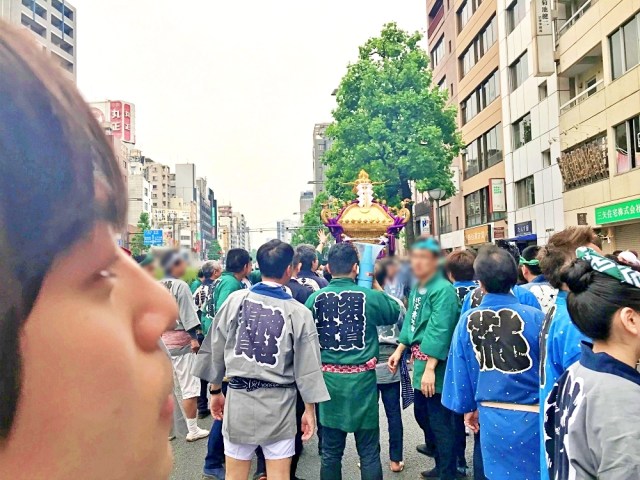
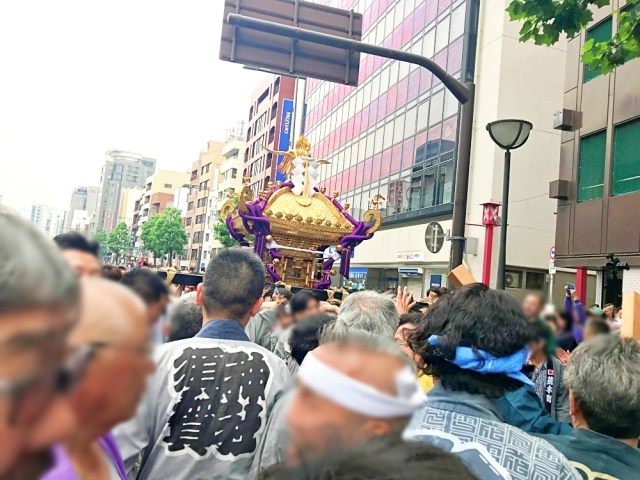
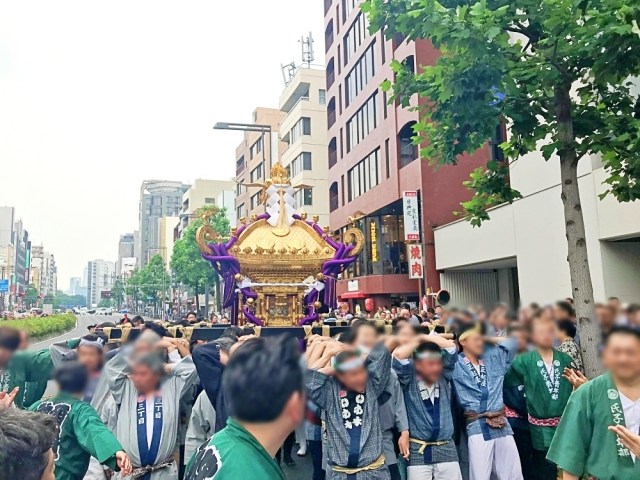

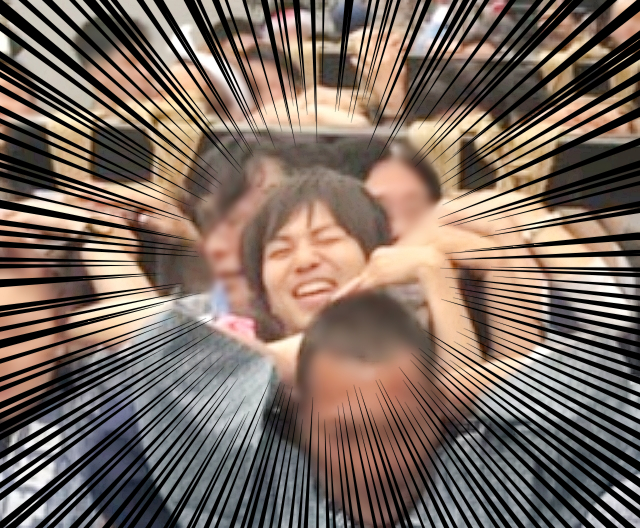
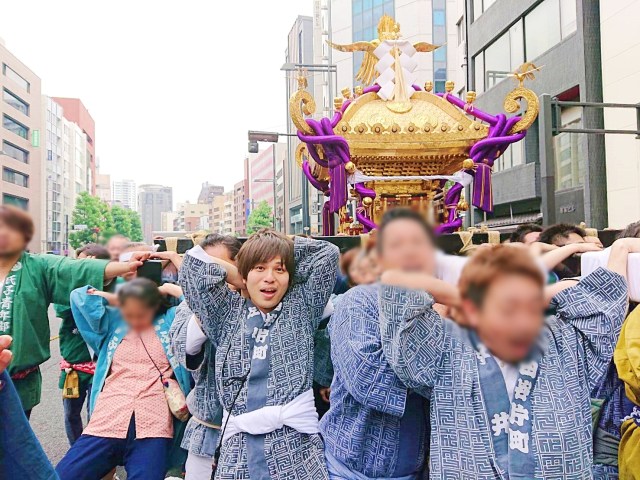
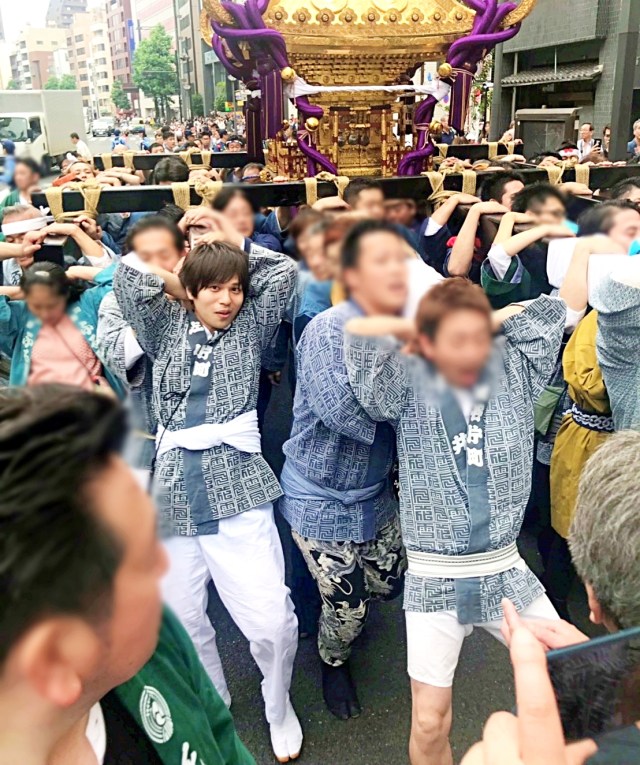
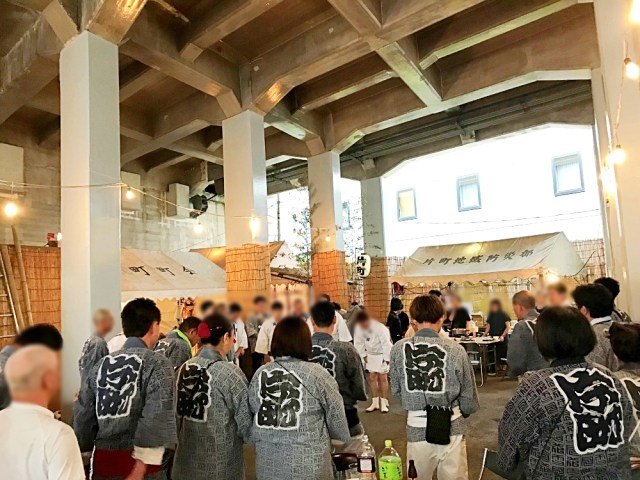
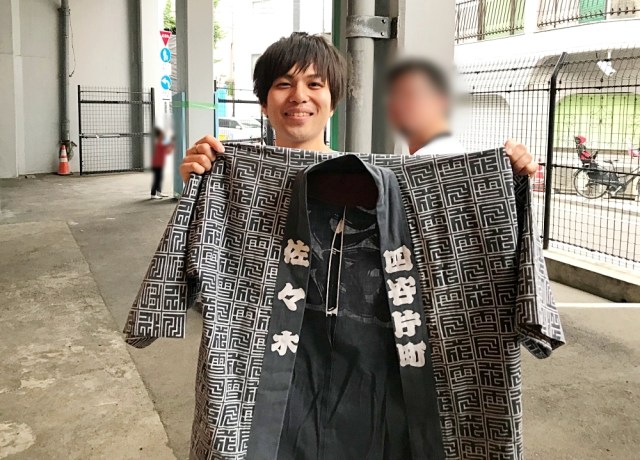
 The most crowded place in Tokyo? Might be the Kanda Matsuri festival, but it’s still awesome
The most crowded place in Tokyo? Might be the Kanda Matsuri festival, but it’s still awesome Is this 7-Eleven sign in Japan really 711 metres from the store?
Is this 7-Eleven sign in Japan really 711 metres from the store? Is it possible to make a cheap senbero drinking party with your dog? 【Japan’s Best Home Senbero】
Is it possible to make a cheap senbero drinking party with your dog? 【Japan’s Best Home Senbero】 Sushi birthday cake turns out to be the best present our reporter could’ve ever asked for
Sushi birthday cake turns out to be the best present our reporter could’ve ever asked for Our writer falls victim to Katsuya’s new Full Power Egg
Our writer falls victim to Katsuya’s new Full Power Egg Japan’s new difficult-to-drink-from beer glass protects your liver, but it’s a brutal experience
Japan’s new difficult-to-drink-from beer glass protects your liver, but it’s a brutal experience Demon Slayer: Kimetsu no Yaiba gets new roller coaster attractions and food at Universal Studios Japan
Demon Slayer: Kimetsu no Yaiba gets new roller coaster attractions and food at Universal Studios Japan How to order snacks on a Shinkansen bullet train in Japan
How to order snacks on a Shinkansen bullet train in Japan Burger King Japan suddenly adds Dr. Pepper and Dr. Pepper floats to its menu nationwide
Burger King Japan suddenly adds Dr. Pepper and Dr. Pepper floats to its menu nationwide New Pokémon ice cream, dessert drinks, and cool merch coming to Baskin-Robbins Japan【Pics】
New Pokémon ice cream, dessert drinks, and cool merch coming to Baskin-Robbins Japan【Pics】 Caffeinated ramen for gamers that you can eat with one hand going on sale in Japan
Caffeinated ramen for gamers that you can eat with one hand going on sale in Japan New samurai glasses are Japan’s latest weird must-have souvenir
New samurai glasses are Japan’s latest weird must-have souvenir McDonald’s adds new watermelon frappe and fruity macaron to its menu in Japan
McDonald’s adds new watermelon frappe and fruity macaron to its menu in Japan Princesses, fruits, and blacksmiths: Study reveals the 30 most unusual family names in Japan
Princesses, fruits, and blacksmiths: Study reveals the 30 most unusual family names in Japan We check out the local flavors of the commonly confused Ome and Aomi areas of Tokyo in one day
We check out the local flavors of the commonly confused Ome and Aomi areas of Tokyo in one day Nintendo history you can feel – Super NES, N64, and GameCube controllers become capsule toys
Nintendo history you can feel – Super NES, N64, and GameCube controllers become capsule toys Hello, cosmetics! Clinique teams up with Hello Kitty this summer for first-time collaboration
Hello, cosmetics! Clinique teams up with Hello Kitty this summer for first-time collaboration “The most Delicious Cup Noodle in history” – Japan’s French Cup Noodle wins our heart【Taste test】
“The most Delicious Cup Noodle in history” – Japan’s French Cup Noodle wins our heart【Taste test】 Starbucks releases a cute Frappuccino and Unicorn Cake…but not in Japan
Starbucks releases a cute Frappuccino and Unicorn Cake…but not in Japan Kyoto Tower mascot termination reveals dark side behind cute Japanese characters
Kyoto Tower mascot termination reveals dark side behind cute Japanese characters McDonald’s Japan’s Soft Twist Tower: A phantom ice cream only sold at select branches
McDonald’s Japan’s Soft Twist Tower: A phantom ice cream only sold at select branches Yabai Ramen: What makes this Japanese ramen so dangerous?
Yabai Ramen: What makes this Japanese ramen so dangerous? Finally! Nintendo Japan expands Switch 8-bit controller sales to everybody, Online member or not
Finally! Nintendo Japan expands Switch 8-bit controller sales to everybody, Online member or not Japanese government wants to build luxury resorts in all national parks for foreign tourists
Japanese government wants to build luxury resorts in all national parks for foreign tourists To combat declining birth rate, Japan to begin offering “Breeding Visas” to foreigners
To combat declining birth rate, Japan to begin offering “Breeding Visas” to foreigners 10 things you should buy at 7-Eleven in Japan
10 things you should buy at 7-Eleven in Japan Studio Ghibli releases anime heroine cosplay dresses that are super comfy to wear
Studio Ghibli releases anime heroine cosplay dresses that are super comfy to wear Woman charged for driving suitcase without a license in Osaka
Woman charged for driving suitcase without a license in Osaka Studio Ghibli unveils My Neighbour Totoro miniature house model
Studio Ghibli unveils My Neighbour Totoro miniature house model Kyoto experiencing problems with foreign tourists not paying for bus fares, but not on purpose
Kyoto experiencing problems with foreign tourists not paying for bus fares, but not on purpose Fighting mild hunger with a Japanese soda that turns into jelly in the stomach【Taste test】
Fighting mild hunger with a Japanese soda that turns into jelly in the stomach【Taste test】 Studio Ghibli’s Howl’s Moving Castle tapestry unveiled in Japan for first time
Studio Ghibli’s Howl’s Moving Castle tapestry unveiled in Japan for first time McDonald’s new Happy Meals offer up cute and practical Sanrio lifestyle goods
McDonald’s new Happy Meals offer up cute and practical Sanrio lifestyle goods Sales of Japan’s most convenient train ticket/shopping payment cards suspended indefinitely
Sales of Japan’s most convenient train ticket/shopping payment cards suspended indefinitely Sold-out Studio Ghibli desktop humidifiers are back so Totoro can help you through the dry season
Sold-out Studio Ghibli desktop humidifiers are back so Totoro can help you through the dry season Japanese government to make first change to romanization spelling rules since the 1950s
Japanese government to make first change to romanization spelling rules since the 1950s Foreigner’s request for help in Tokyo makes us sad for the state of society
Foreigner’s request for help in Tokyo makes us sad for the state of society Ghibli founders Toshio Suzuki and Hayao Miyazaki contribute to Japanese whisky Totoro label design
Ghibli founders Toshio Suzuki and Hayao Miyazaki contribute to Japanese whisky Totoro label design Doraemon found buried at sea as scene from 1993 anime becomes real life【Photos】
Doraemon found buried at sea as scene from 1993 anime becomes real life【Photos】 Tokyo’s most famous Starbucks is closed
Tokyo’s most famous Starbucks is closed If you have an apartment in Japan, your “fire disaster insurance” may also be toilet insurance
If you have an apartment in Japan, your “fire disaster insurance” may also be toilet insurance 7-Eleven’s new Ebiten tempura shrimp rice ball is premium in both taste AND cost
7-Eleven’s new Ebiten tempura shrimp rice ball is premium in both taste AND cost We attempt to conquer the 7-hour all-you-can-eat yakiniku deal at Yakiniku Like
We attempt to conquer the 7-hour all-you-can-eat yakiniku deal at Yakiniku Like Japanese Penis Festival shrine distances itself from penis mascot
Japanese Penis Festival shrine distances itself from penis mascot Restaurant by Tokyo SkyTree perfects Inari Sushi, sells nothing else for 40 years
Restaurant by Tokyo SkyTree perfects Inari Sushi, sells nothing else for 40 years We investigate the half-priced beer at Sushiro that everyone is angry about
We investigate the half-priced beer at Sushiro that everyone is angry about All-you-can drink deal in Japan puts the self-serve drinks machine right on your table
All-you-can drink deal in Japan puts the self-serve drinks machine right on your table How should you use the small hiroen in a Japanese ryokan hotel room?
How should you use the small hiroen in a Japanese ryokan hotel room? Bulky boxes of wagyu beef can be yours with Japan’s rental frying pan/meat subscription service
Bulky boxes of wagyu beef can be yours with Japan’s rental frying pan/meat subscription service Taste test battle! The new Mister Donut ice cream bar vs. a frozen Mister Donut donut【Taste test】
Taste test battle! The new Mister Donut ice cream bar vs. a frozen Mister Donut donut【Taste test】 We order a “Mystery Lucky Bag of Imperfect Goods” through Amazon, end up with a pile of crab
We order a “Mystery Lucky Bag of Imperfect Goods” through Amazon, end up with a pile of crab Which Japanese tube chip brand is the least disappointing upon opening? We measure to find out
Which Japanese tube chip brand is the least disappointing upon opening? We measure to find out Sure eel flavored potato chips are great, but here’s a recipe that’ll make them even better!
Sure eel flavored potato chips are great, but here’s a recipe that’ll make them even better! Is Coca-Cola Japan’s new canned Jack Daniels cocktail better than mixing your own?【Taste test】
Is Coca-Cola Japan’s new canned Jack Daniels cocktail better than mixing your own?【Taste test】 Saizeriya’s private solo booths are one of the best places to work, drink and eat in Japan
Saizeriya’s private solo booths are one of the best places to work, drink and eat in Japan Bacon and Egg Sauce Katsudon: A new way to eat breakfast in Japan
Bacon and Egg Sauce Katsudon: A new way to eat breakfast in Japan
Leave a Reply